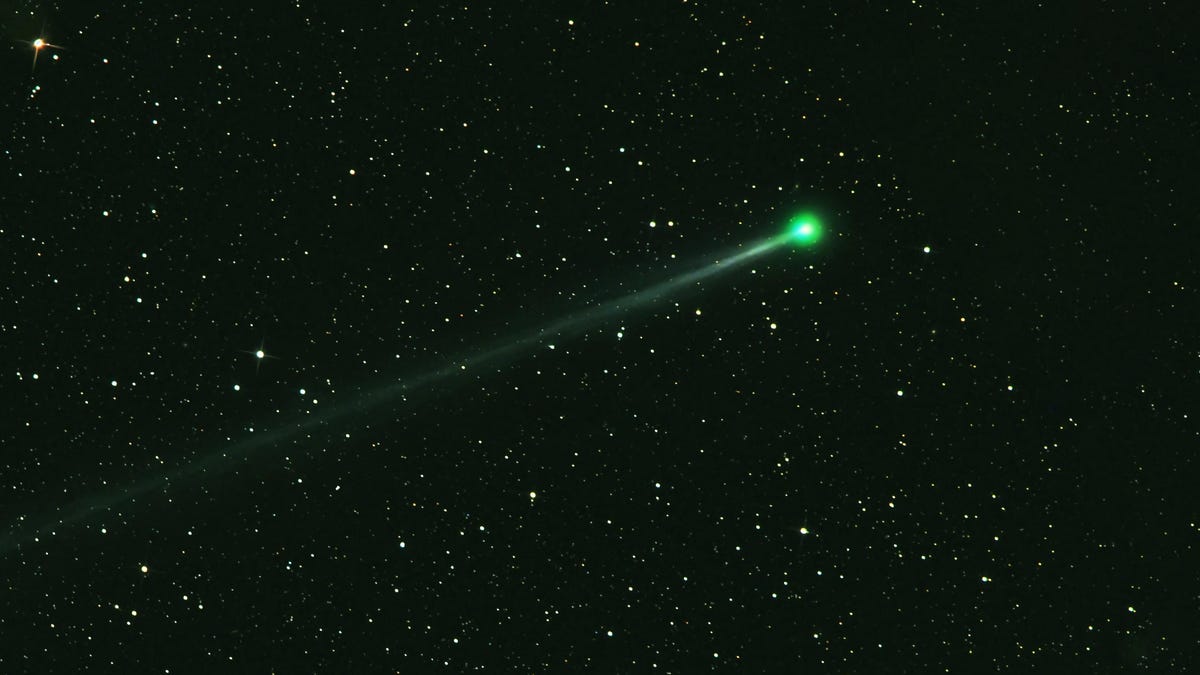How to See a Green Comet Hurtle Past Earth
Unless you are immortal, the next few weeks offer the only chance you’ll have to see Comet ZTF (C/2022 E3). The newly discovered chunk of ice and rock will glow green in the nighttime sky in the first few...

Photo: Artsiom P (Shutterstock)
Unless you are immortal, the next few weeks offer the only chance you’ll have to see Comet ZTF (C/2022 E3). The newly discovered chunk of ice and rock will glow green in the nighttime sky in the first few weeks of February, and it won’t be back near Earth for 50,000 years—if it ever returns at all.
The green comet will buzz by at around 128,000 miles per hour at a cosmically close distance of only 26 million miles from Earth. It will be at its absolute closest to our planet tonight, on Feb. 1, but the relatively bright moon will make seeing it challenging for most of us. As the shadow of Earth falls over the moon’s face over the next few weeks, though, this colorful visitor to our nighttime sky will become easier to see.
Where to look in the sky to see the green comet
Comet ZTF (C/2022 E3) is visible in the northern part of the sky. To find it, locate the Little Dipper constellation. The tip of its handle is the North Star, Polaris. The comet will be up and to the right of Polaris, and will appear to move east over the next few weeks. As an added bonus, on Feb. 10, the comet will appear close to Mars. Here is a much more in-depth guide to where the comet can be seen, if you want to take a trip into the astronomical weeds.
You might be able to see the comet with your naked eyes if you can find a particularly dark place to view it, but binoculars are highly recommended. Better still, get a telescope. C/2022 E3 (ZTF) should be big and bright enough to see with a six-inch or larger scope and the view should be detailed enough to make out its beguiling emerald hue. If you’d rather not brave the cold temperatures for a look at a tiny dot in the sky, you can check out a livestream from the Virtual Telescope Project. It begins tonight at 11 p.m. ET.
Why is C/2022 E3 (ZTF) green?
The green comet’s coma, the nebulous envelope around is nucleus, appears blue-green because ultraviolet light from the sun is breaking down organic molecules into simpler compounds, including diatomic carbon which glows green. But maybe it’s magic or something. Who can tell?
Where did the green comet come from, and what does it want?
According to the best hypotheses of scientists, ZTF (C/2022 E3) hails from the Oort Cloud on the far edge of the solar system. This theoretical cloud of icy detritus is so far away (between 0.03 to 3.2 lightyears) that it is only loosely bound to the sun’s collection of planets, and occasionally, the gravitational pull of passing stars draws comets toward us. This is what seems to have happened to ZTF (C/2022 E3).
Comets with highly elliptical paths are prone to having their orbits disturbed by the gravitational pull of other celestial bodies, so each time this comet’s orbit brings it to the inner solar system, there’s a chance it will break free of the gravitational pull of our sun and travel outside of the solar system entirely, to some unknowable distant location. This is probably what is in store for the green comet. Scientists think the most likely culprit is Jupiter, forever after to be known as the planet that stole our beloved comet from us.

 Troov
Troov 

































